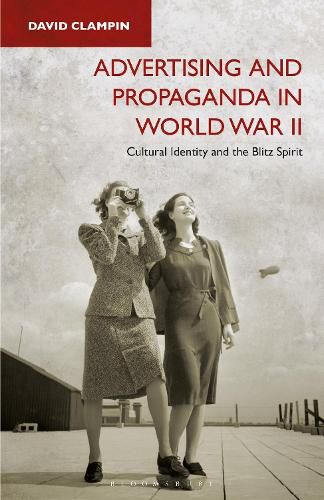Readings Newsletter
Become a Readings Member to make your shopping experience even easier.
Sign in or sign up for free!
You’re not far away from qualifying for FREE standard shipping within Australia
You’ve qualified for FREE standard shipping within Australia
The cart is loading…






The Blitz- the period of Nazi bombing campaigns on civilian Britain during World War II- was a formative period for British national identity. In this groundbreaking book, David Clampin looks at the images, campaigns and slogans which helped to form the fabled ‘Blitz spirit’- powerfully echoed in Winston Churchill’s speeches. Because advertisers attempted to capitalise on war-time patriotism, Clampin’s unique focus on advertising provides a visually rich seam of new information on the everyday war, and makes an enormous contribution to the debate on people’s experiences of war and nationalism. Using a remarkable and hitherto unseen range of primary source material-advertisements in the press, slogans and posters-this work will reshape the contested meanings of the ‘Home Front’, opening up cultural history discourses on gender and nationalism. Advertising and Propaganda in World War II is essential reading for historians of World War II as well as students and scholars of Media Studies and Communication Studies.
$9.00 standard shipping within Australia
FREE standard shipping within Australia for orders over $100.00
Express & International shipping calculated at checkout
The Blitz- the period of Nazi bombing campaigns on civilian Britain during World War II- was a formative period for British national identity. In this groundbreaking book, David Clampin looks at the images, campaigns and slogans which helped to form the fabled ‘Blitz spirit’- powerfully echoed in Winston Churchill’s speeches. Because advertisers attempted to capitalise on war-time patriotism, Clampin’s unique focus on advertising provides a visually rich seam of new information on the everyday war, and makes an enormous contribution to the debate on people’s experiences of war and nationalism. Using a remarkable and hitherto unseen range of primary source material-advertisements in the press, slogans and posters-this work will reshape the contested meanings of the ‘Home Front’, opening up cultural history discourses on gender and nationalism. Advertising and Propaganda in World War II is essential reading for historians of World War II as well as students and scholars of Media Studies and Communication Studies.